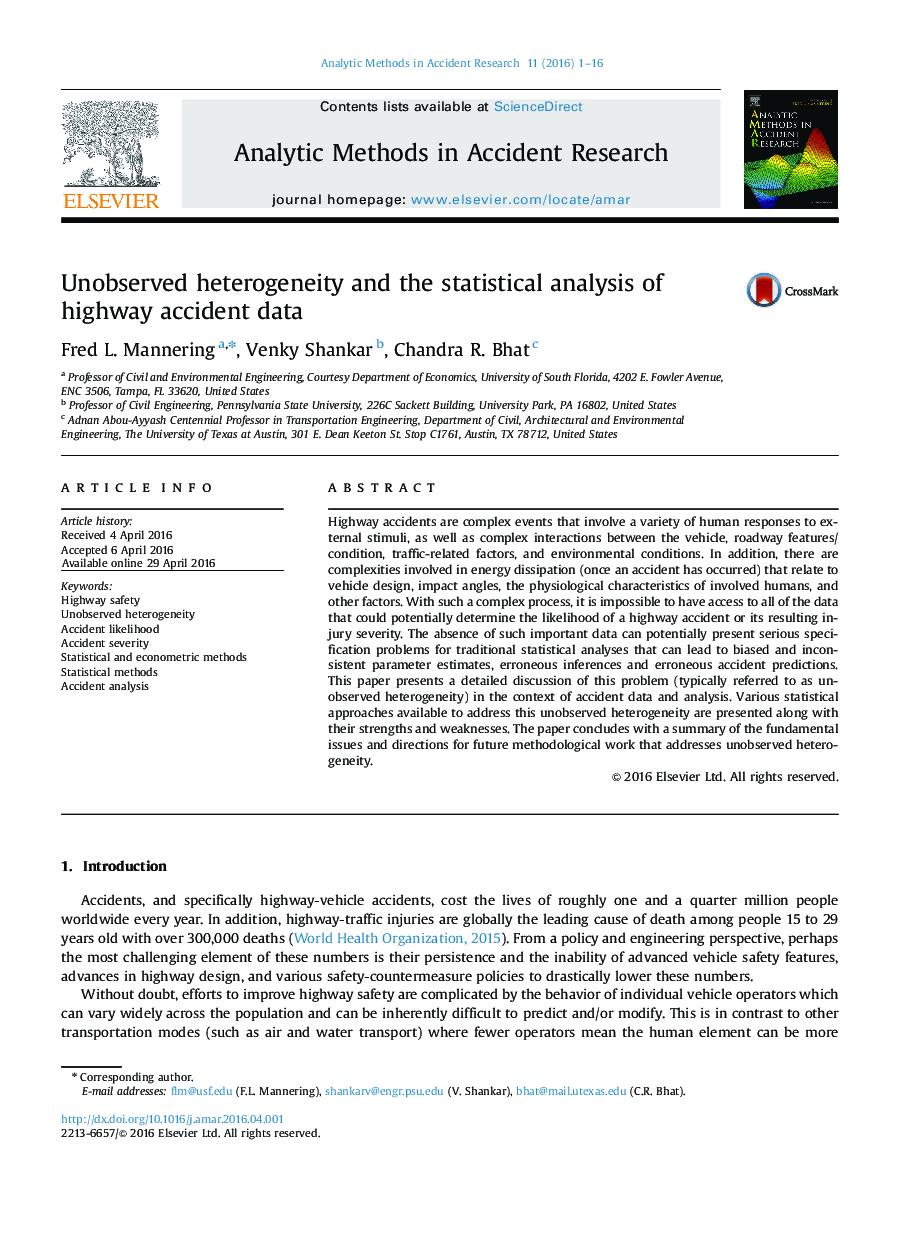| Article ID | Journal | Published Year | Pages | File Type |
|---|---|---|---|---|
| 1104541 | Analytic Methods in Accident Research | 2016 | 16 Pages |
•We underscore the importance of addressing unobserved heterogeneity in the analysis of highway accident data.•Strengths and weaknesses of random parameters, latent class, and other "heterogeneity" modeling methods.•Model transferability, correlated parameters, and other concepts in "heterogeneity" modeling.•Directions for future statistical and econometric approaches to address unobserved heterogeneity.
Highway accidents are complex events that involve a variety of human responses to external stimuli, as well as complex interactions between the vehicle, roadway features/condition, traffic-related factors, and environmental conditions. In addition, there are complexities involved in energy dissipation (once an accident has occurred) that relate to vehicle design, impact angles, the physiological characteristics of involved humans, and other factors. With such a complex process, it is impossible to have access to all of the data that could potentially determine the likelihood of a highway accident or its resulting injury severity. The absence of such important data can potentially present serious specification problems for traditional statistical analyses that can lead to biased and inconsistent parameter estimates, erroneous inferences and erroneous accident predictions. This paper presents a detailed discussion of this problem (typically referred to as unobserved heterogeneity) in the context of accident data and analysis. Various statistical approaches available to address this unobserved heterogeneity are presented along with their strengths and weaknesses. The paper concludes with a summary of the fundamental issues and directions for future methodological work that addresses unobserved heterogeneity.
